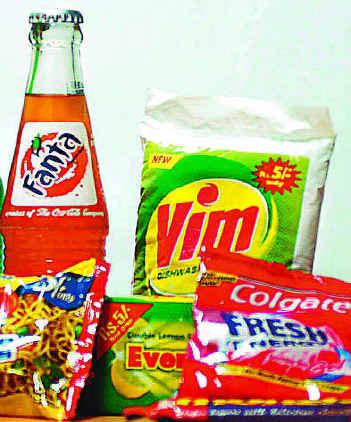It’s deja vu for the FMCG industry. Down-trading, a phenomenon which disappeared from the FMCG universe a few years ago, is expected to make a comeback, thanks to high inflation. Fearing the worst, consumer goods companies, which were getting used to high-margin products gaining ground riding on higher disposable incomes, are revisiting strategies for their price-warrior brands and are turning them into focus areas. Discount detergent brands like Nirma, Ghadi and Fena, toothpaste brands like Ajanta and Anchor and a host of other brands in soap, hair oil and biscuit categories, could once again pose a threat to the big players, as consumers have started looking for cheaper alternatives. This will be a repeat of 2003-04, when these smaller players forced the big brands to significantly alter their marketing and pricing strategies. Neeraj Chandra, biscuits major Britannia India’s vice-president (sales, marketing & innovation) said, “In the current scenario, some amount of downtrading is certainly expected. We have started preparing for this not only by stepping up focus on our mass brands, but also by exploring new value price points which may emerge.” The mass-priced Tiger, Britannia’s biggest brand by volumes, could be specially vulnerable to losing share from smaller regional brands. It’s the same story for soaps. “There may be a resurgence of downtrading across categories. To counter this, we have decided to increase focus on our price-warrior brands, specially Godrej No 1 soap,” said Godrej Consumer Products executive director and president, Hoshedar Press. Among the company’s leading brands, Godrej No 1 competes directly against HUL’s Breeze and Nirma beauty soap. Dabur is another company gearing up to cope with downtrading. Dabur India chief executive officer, Sunil Duggal, said, “We are taking a closer look at some of our competitively-priced brands.” Stating that Dabur was well-equipped to deal with downtrading, Mr Duggal said the company would consider giving more footprint to its low-priced brands such as Anmol and Babool, mainly in terms of distribution. The real impact of the downtrading, if it actually happens in big measure, will be reflected in the next two-three quarters. Brokerage firm Angel Broking’s FMCG analyst, Anand Shah said, “For the past couple of years, pricing power was buoyant and companies could afford to hike prices without fearing any negative impact. However, the companies, which have a portfolio of brands positioned on the mass segment, have reasons to be apprehensive, as their brands may lose share to cheaper regional brands.” Analysts say that Hindustan Unilever is better placed than most of the other companies to deal with the prevailing situation thanks to its diversified portfolio. “Because of the number of brands in its portfolio across price points, HUL can keep the consumer within its fold, even if, for example, it means a consumer downtrading from Lux to Breeze,” said an analyst. The maximum downtrading is expected in the mid-tier, middle-class urban segment. “The impact of inflation on the urban rich is not very significant because in real terms the economy is growing and high-margin products could continue to do well. As for the rural demand, it is strongly linked to the monsoon, which is looking good,” said another analyst. The past few years have seen market shares of discount brands shrinking significantly. For the 12-month period between April 2007 and March 2008, for example, Anchor toothpaste’s all-India value market share stood only at 3.8%, while that of Ajanta was even smaller at 1.9%, as per AC Nielsen data. This could change if inflation persists at the current rate. |
Monday, June 23, 2008
FMCGs try to fend off price warriors
Subscribe to:
Post Comments (Atom)





1 comment:
Nice blog post!!!
Distributor Locations
Distributors Profile
Distributor Lists
Geo-locations
Post a Comment